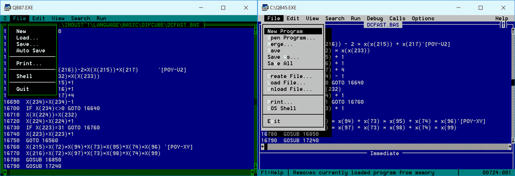First post, by dcouzin
From the English language Wikipedia article on DOSBox you'd think that DOSBox was for games while vDos was "for the running the more 'serious' DOS apps (not games)". Nevertheless the author of vDos just informed me that one needs DOSBox to run QB87.exe (because vDos doesn't support the low level Int 9 keyboard interrupt). I don't know what those words mean, since I'm a physical scientist. QB87 is the 1987 flavor of QuickBASIC that I've used since 1993 to write programs. It's the most 'serious' DOS app I know.
So I'm surprised that 'QB87' doesn't get a single hit in a search of this forum. I'm looking for confirmation that QB87 runs well under DOSBox, and for hints on getting it running.
QB87 was running well enough, and very fast, under the NTVDM included with 32-bit Windows 10. Now I've graduated to 64-bit Windows 10 and there's no NTVDM. I can't function professionally without QB87. My choices seem to be: 1. keep an old 32 bit Windows computer running; 2. make the new computer dual boot into 64- and 32-bit Windows; 3. find a DOS emulator for QB87. The 3rd choice seems the most elegant.
All advice appreciated.
DC
